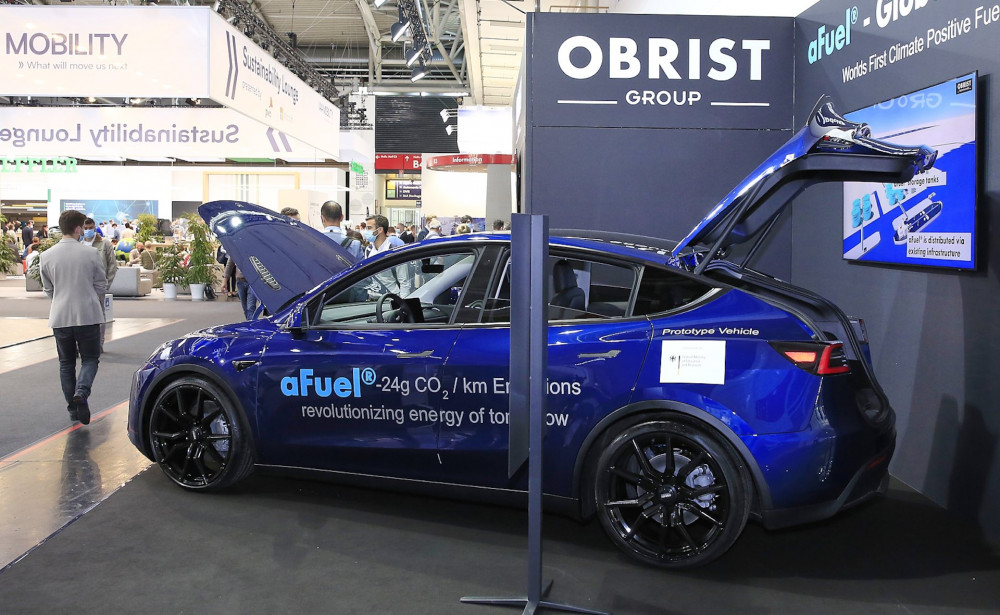Tesla Model Y Turned Into A PHEV With Obrist's HyperHybrid Engine

by AutoExpert | 8 September, 2021
In addition to improving a country's charging infrastructure and reducing charging times with updated technologies, the most obvious approach to solve range anxiety concerns is to install larger batteries in electric automobiles. But, larger batteries add size and cost, making EVs more expensive and less maneuverable than standard ICE vehicles. Austrian engine expert Obrist believes that their HyperHybrid engine, pictured here in a Tesla Model Y on display at the Munich Motor Show, is superior to Tesla's current technology.
These are tiny ICE engines that never move the wheels of an automobile directly but are solely used to recharge the car's batteries.

Carmakers may use smaller batteries because Obrist's HyperHybrid engine operates more smoothly than prior range extenders, according to the company.
On the other hand, the average EV system may cost up to €12,000 ($14,000). The company is now in talks with automakers about licensing the innovation.

However, this particular range extender is powered by a two-cylinder gasoline motor, an electric engine and a considerably smaller battery than what was initially installed in the Tesla Model Y. Obrist has created many alternative range extenders ranging in power from 135 to 268-hp. Only 2.0 lt/100km (118 US mpg/141 Imperial mpg) of fuel consumption is stated.
The ICE unit's dual counter-rotating crankshafts are the most fascinating innovation since they eliminate the tremors that made the BMW i3 seem so raw. Obrist's HyperHybrid engine has superior NVH properties than a V12. Observe how the coin runs on top of it in the video below!
Obrist's HyperHybrid engine only works in its optimal range and is thus considerably cleaner than a traditional ICE. Synthetic fuels, on the other hand, might reduce CO2 emissions to zero in the future.

















